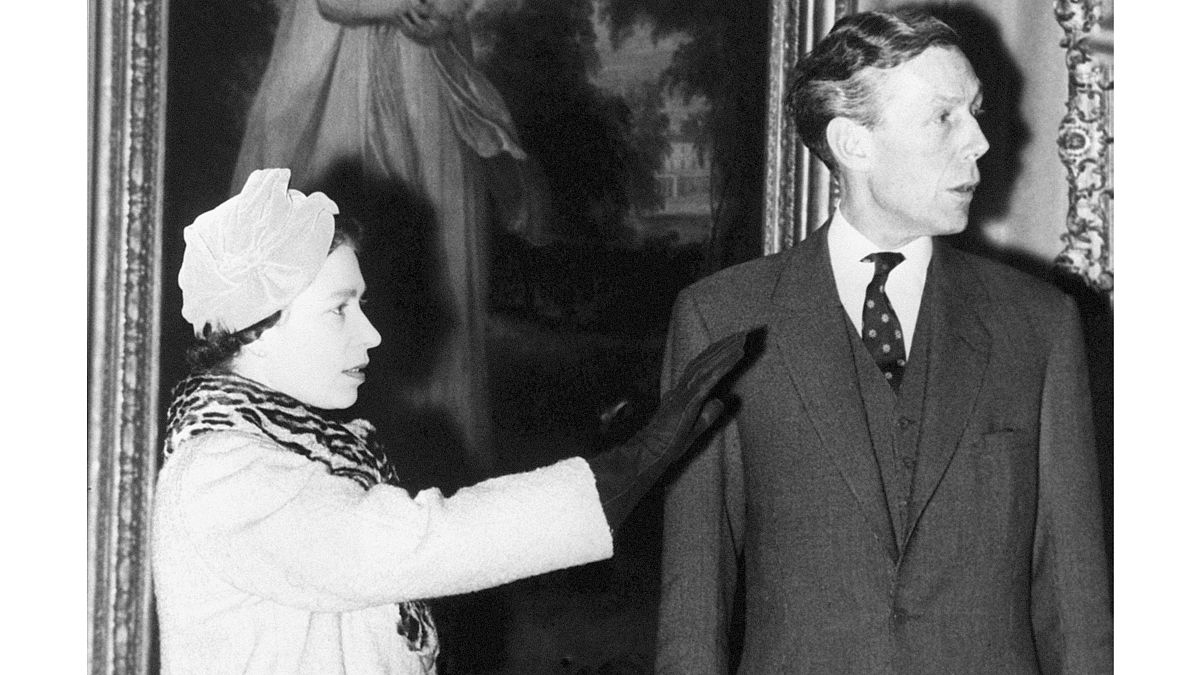Anthony Blunt, a royal art historian, confessed in 1964 to spying for the Soviets, but the late queen was not officially told about his past until 1973.
Queen Elizabeth II was not told for almost a decade that a long-serving royal art historian had confessed to being a Soviet spy, according to newly declassified documents.
The files about Anthony Blunt, one of the late monarch’s most senior advisers, were part of a trove of MI5 intelligence agency files that were declassified by Britain’s National Archives on Tuesday.
They shed new light on the Cambridge Five, a spy ring linked to Cambridge University in the 1930s, whose members spilled secrets to the Soviet Union from the heart of the UK’s intelligence establishment.
Blunt, who was part of that spy ring, worked as the Surveyor of the Queen’s Pictures from 1945 until his retirement in 1972.
Although there had long been suspicions about Blunt, the distinguished art historian only confessed to leading a double life in 1964, after being promised immunity from prosecution. He admitted that he had handed over information to Russia’s KGB spy agency while working as a senior MI5 officer during World War II.
The double agent also said that he had been in touch with the Russian intelligence service after the war.
In Blunt’s confession, he expressed “profound relief” at coming clean, according to the newly released files, which also shed some light on how much the late queen knew about her art adviser’s past.
One memo shows that Martin Charteris, the monarch’s private secretary, told MI5 boss Michael Hanley in 1972 that the queen was unaware of Blunt’s spying, saying that to inform her “would only add to her worries”.
The following year, Edward Heath’s government decided to officially tell the queen about Blunt.
The decision was taken because the former spy was ill with cancer and it was feared that, upon his death, the media, no longer fearing potential libel suits, would publish stories about him, his spying and his work for the royal family.
Charteris said she took the news “very calmly and without surprise”. The queen in fact “remembered that he had been under suspicion way back” in the early 1950s, he added.
However, Miranda Carter, Blunt’s biographer, said she thought the queen knew the truth about Blunt much earlier.
Charteris’ story gave the monarch “plausible deniability”, Carter said.
“It would have been excruciatingly embarrassing if it had come out and everybody had known that she’d known,” she added.
Blunt was finally outed as a spy in 1979 by Britain’s then-Prime Minister Margaret Thatcher in the House of Commons. The art expert died aged 75 in 1983, having been stripped of his knighthood.
The newly released files also contain information about other members of the notorious Cambridge Five, who fed British state secrets to the Russians.
Kim Philby, a member of the spy ring, was confronted in Beirut in 1963 by his friend and fellow MI6 officer Nicholas Elliott, as evidence against him was stacking up.
In their recorded conversation, a transcript of which has been published by the National Archives, Philby admitted to betraying Konstantin Volkov, a KGB officer who attempted to defect to the West in 1945.
As a result of Philby’s actions, Volkov and his wife were abducted in Istanbul, and forcibly returned to Moscow, where they were killed.
“I really did feel a tremendous loyalty to MI6. I was treated very, very well in it and I made some really marvellous friends there,” Philby said, according to the transcript. “But the overruling inspiration was the other side.”
Some of the newly released documents will appear in a National Archives exhibition — “MI5: Official Secrets” — later this year.

